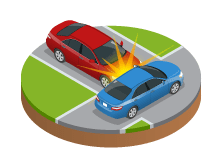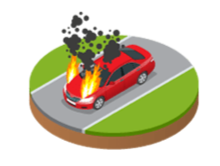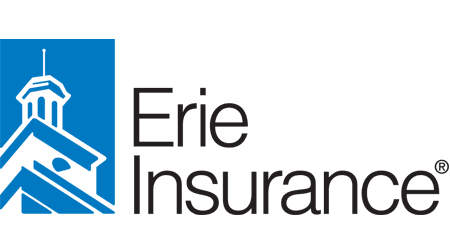Get the cheapest quotes for your car
Compare providers in your area.
Your information is secure
Compare providers in your area.
Your information is secure
Pennsylvania drivers pay an average of $1,100.84 per year for car insurance according to the National Association of Insurance Commissioners (NAIC), that’s about $91.74 per month. Pennsylvania drivers pay about 7% less than the countrywide national average of $1,189.64.
The NAIC takes into account all car insurance policies within the state such as drivers who select only state minimum coverage, as well as policies that include various levels of comprehensive and collision coverage. Because car insurance rates are influenced by personal factors, you could find yourself paying significantly less.

In choice no-fault states, drivers can choose no-fault coverage in which each driver pays for their own injury-related expenses.
Drivers in Pennsylvania are required to carry a minimum amount of liability coverage to legally drive. You may see it written as 15/30/5, but we’ll break down what that means.

Pennsylvania requires $15,000 in bodily injury liability per person and $30,000 of bodily injury per accident. That’s right in line with what most states require for liability coverage, though the per accident limit is slightly higher than the typical $50,000 limit.
This means $15,000 is the most your insurer will pay for a single person injured by you in an at-fault accident. And $30,000 is the maximum amount your insurer will pay if there is more than one person injured by you in an at-fault accident. Any costs outside of your bodily injury limit are required to come out of your pocket.

Pennsylvania requires drivers to carry $5,000 of property damage liability to legally drive. This coverage requirement is the lowest among the states.
This means $5,000 is the maximum amount your car insurance company will pay towards damages you cause to another person’s car or property, such as repairs to a car, fence or building. You’ll have to pay out of pocket for any costs beyond your property damage liability limit.

Pennsylvania drivers are required to carry $5,000 worth of medical benefits coverage to legally drive.
This coverage helps pay your or your passenger’s medical expenses if you’re injured in an accident, regardless of fault.
These state-mandated requirements are the lowest amount of coverage you need to legally drive in Pennsylvania, but may fall short if you’re in a major accident. To avoid high out-of-pocket costs after an accident, consider raising your liability limits by balancing coverage, your budget and what you can afford to pay out of pocket for certain damage.
The cost of medical care anywhere in the US is astronomical and can bankrupt an individual for a lifetime if they are not covered. And with the average cost of cars going up, multi-car accidents can also accrue six-digit liability claims. That said, 100/300/100 should provide adequate coverage for most drivers in Pennsylvania.”
Pennsylvania is a choice no-fault state which means that you choose between traditional tort liability or no-fault laws, according to the legal website Nolo. If you choose tort liability, you can sue other drivers for pain and suffering with no limitations. If you choose no-fault coverage, you’ll file injury claims under your personal injury protection unless you suffer a serious injury.
However, Pennsylvania’s no-fault laws don’t apply to property damage like car repairs, according to Nolo. Your insurance company and legal authorities will determine who’s at fault for this damage.
Pennsylvania also considers whether both drivers are partially at fault under a law called modified comparative fault. Under this law, both drivers are assigned a percentage of fault. Drivers with less than 50% of fault can get reimbursed for their car’s damage.
For instance, if you’re 80% responsible for an accident, your insurance pays 80% of the other driver’s damages. However, the other driver isn’t required to pay for your damages, even though they’re 20% at fault.
If you want to pay sub-$200 per month as a young driver under 25, you’ll need to go with Allstate or USAA.
USAA also brings the lowest rates for other ages. Drivers age 55 and older may want to cross-check with Progressive and Geico to make sure you’re getting the best deal.
| Age | Allstate | Progressive | Geico | USAA |
|---|---|---|---|---|
| 16-24 | $199.14 | $209.02 | $204.86 | $158.51 |
| 25-34 | $170.78 | $144.01 | $148.10 | $137.27 |
| 35-44 | $160.51 | $132.90 | $145.24 | $116.15 |
| 45-54 | $134.16 | $123.59 | $144.81 | $106.09 |
| 55-64 | $143.10 | $106.95 | $116.89 | – |
USAA brings the lowest rates to the table in Pennsylvania, based on sample quotes from Savvy. However, Progressive offers competitive rates if you don’t qualify for USAA.
Either company rewards safe drivers with claim-free discounts or through the Progressive Snapshot and USAA Safepilot programs. These programs track your driving and set discounts based on how safe you are on the road.
| Company | Allstate | Progressive | Geico | USAA |
|---|---|---|---|---|
| Rate | $159.54 | $139.02 | $148.97 | $132.85 |
In Pennsylvania, you get to shop in a wide car insurance market. Whether you’re looking to balance cost with coverage add-ons, customer service, travel perks or rewards for your safe driving, you can cover those needs with our top company picks.
We vetted these companies for you by looking at their coverage, discounts and perks like whether they have local agents. We also checked company ratings from J.D. Power, Better Business Bureau, AM Best and the National Association of Insurance Commissioners.
Progressive
Finder score
Plus, Progressive rewards safe drivers by cutting up to a third of your car insurance bill if you have a claim-free history. Otherwise, you can join its Snapshot program to show off your safe driving and earn a discount up to 30%.
| Telematics | Snapshot |
|---|---|
| Gap insurance | Loan/lease coverage |
| Telematics | Snapshot |
|---|---|
| Gap insurance | Loan/lease coverage |

Erie
Finder score
Another big perk: Erie doesn't jack up your rates year to year for no reason. Your rate stays the same unless you change addresses or change cars or drivers on your policy. Plus, you'll have a myriad of options in the coverage department.
AAA
Finder score
You'll also get perks galore with this company, especially with its popular roadside assistance plans. Roadside assistance perks include a three-year battery replacement warranty and car repair discounts for choosing one of AAA's network mechanics.
| Telematics | No |
|---|---|
| Gap insurance | Yes |
| Telematics | No |
|---|---|
| Gap insurance | Yes |
Nationwide
Finder score
Why Nationwide? This brand has a solid A+ financial rating from AM Best and decades of experience to back your claims.
| Telematics | Yes |
|---|---|
| Gap insurance | Yes |
| Telematics | Yes |
|---|---|
| Gap insurance | Yes |
Factors are characteristics specific to you that car insurance companies use to set how much you’ll pay for car insurance. The less risky each of your factors is the less you pay, the riskier you are the more you’ll pay. We’ll break down Pennsylvanian’s rating factors to keep in mind.
| Factor | How it affects your rates |
|---|---|
Age | How old you are is a top factor in determining your car insurance rates. With each passing year, you earn more experience on the road. More experience can equal cheaper rates. Teen drivers pay the most, but rates begin to level off around your 20’s with drivers over 50 paying the least. |
Gender | Pennsylvania is one of seven states that bans the use of gender in calculating car insurance premiums. Insurers rely on factors such as age, location, driving record and what type of car you drive. |
Location | Where you live affects your rates, including where you park your car. High theft rates, high traffic and a high number of uninsured drivers could mean higher rates. Pennsylvania vehicle theft rates stand at 121 vehicle thefts per 100,000 inhabitants, according to the FBI’s most recent report on vehicle theft rates. That’s well below the national average of 246 vehicle thefts per 100,000 inhabitants. As for uninsured drivers, 6% of Pennsylvanians on the road are uninsured. This state takes 6th place for the lowest percentage of uninsured drivers in a state according to Insurance Information Institute, with the national average standing at 12.6%. |
Vehicle and mileage | Your car’s make, model and trim directly affect how much you’ll pay for car insurance. Things like its cost, safety ratings, the likelihood of theft and sportiness all help insurers determine its cost to insure. Safer and cheaper vehicles score the lowest rates, with luxury vehicles with higher repair costs resulting in higher premiums. And, the more you’re on the road, the more at-risk you are to get in an accident, which means higher premiums. However, according to the Bureau of Transportation, Pennsylvanians drive an average of 32.7 miles per day, that’s below the average across the US of 36.1 miles per day. |
Credit score | Your credit score is included in your credit-based insurance score which insurers use to help calculate rates. According to the Insurance Information Institute, there is a strong correlation between your insurance score and claims filings. A good credit-based insurance score could mean lower rates. Pennsylvanians have protections under state laws that regulate the use of your credit history when issuing car insurance policies. Credit score can be used to set your initial rates and to lower your rates at renewal. However, they can’t be used to increase your rates at renewal. |
Coverage | The more coverage you get and the higher limits you choose, the more protection you’ll have and the more you’ll pay in monthly premiums. And, if you opt for full coverage car insurance that includes comprehensive and collision, the amount of your deductible weighs into your costs too, higher deductibles mean lower monthly premiums. |
Driving Record | The better your driving record, the lower your premium. If you’re in an at-fault accident you could see rates increases from 20% to 50%. And DUI’s in Pennsylvania can increase your rate by around 25%. These types of violations typically stay on your record for about three years. |
No, Pennsylvania is one of a few states that doesn’t require SR-22 insurance to reinstate your license after a serious driving conviction. An SR-22 isn’t actually a type of insurance, but rather an attachment you file with the state government showing that your car insurance policy meets or exceeds the state minimums for coverage. You will need to maintain your current SR-22 if you’re moving to Pennsylvania from another state, however.
Pennslyvania has a lower theft rate on average, and a low percentage of uninsured drivers – which is all great for you! However, having some extra coverage is worth considering.
Of all the states, Pennslyvania has the lowest state minimum for property damage liability, sitting at $5,000. This is very low. Considering that replacing an electric vehicle’s battery has an average cost of $5,500, according to TrueCar, Pennslyvania’s minimum isn’t enough coverage for that simple repair. We recommend considering a higher property damage liability so that you can avoid paying for excessive property damage repairs in the event of an accident.
Pennslyvania requires that you carry only $5,000 in medical benefits to legally drive. If you’re injured in an accident, regardless if you’re at fault, the $5,000 would be used to cover you or your passenger’s medical expenses. Medical expenses can stack up quickly, and if your health insurance isn’t the greatest, this can mean lots of out-of-pocket costs. Be sure to talk with an insurance agent and discuss all your options to find the best coverage for your situation.
Consider higher medical benefits if . . .
If you have a loan on your vehicle, your lender is likely to require comprehensive coverage – and for good reason. This coverage steps in to help with uncontrollable and unpredictable events, including an animal strike, fire, flood, theft, hail and storm damage, and more.
Consider comprehensive coverage if . . .
We’ve pulled the top 10 companies by market share that offer coverage in Pennsylvania according to S&P Global. Compare top companies by three major rating agencies along with our overall score.
| Provider | BBB Rating | JD Power Rating | NAIC complaint ratio | National market share % | Finder score | Go to site |
|---|---|---|---|---|---|---|
State Farm | A+ | 847/1000 | 1.93 | 16.2 | ★★★★★ 4/5 | |
Geico | A+ | 832/1000 | 1.42 | 13.6 | ★★★★★ 4/5 | |
Progressive | A+ | 830/1000 | 1.05 | 13.3 | ★★★★★ 4/5 | Get Quotes |
Allstate | A+ | 827/1000 | 2.71 | 10.4 | ★★★★★ 4/5 | |
USAA | A+ | 884/1000 | 1.9 | 6.3 | ★★★★★ 4/5 | |
Farmers | A- | 820/1000 | 1.64 | 4.9 | ★★★★★ 4/5 | |
Liberty Mutual | A+ | 827/1000 | 2.2 | 4.7 | ★★★★★ 4/5 | Get Quotes |
Nationwide | A+ | 814/1000 | 2.08 | 2.3 | ★★★★★ 4/5 | |
Travelers | A+ | 820/1000 | 3.28 | 2 | ★★★★★ 4/5 | |
Kemper | A+ | 784/1000 | 6.42 | 1.5 | ★★★★★ 3/5 |
Of Pennsylvania’s largest cities, Lancaster has the cheapest rates and Philadelphia has the most expensive car insurance rates. Philadelphia drivers could face rates 7 times more than Lancaster drivers.
| Company | Annual car insurance rate |
|---|---|
| Allstate | $1876 |
| Metromile | $793 |
| SafeAuto | $2457 |
| Progressive | $1808 |
| Company | Annual car insurance rate |
|---|---|
| Allstate | $1774 |
| Metromile | $718 |
| SafeAuto | $2478 |
| Progressive | $1628 |
| Company | Annual car insurance rate |
|---|---|
| Allstate | $2147 |
| Metromile | $915 |
| SafeAuto | $2832 |
| Progressive | $1953 |
| Company | Annual car insurance rate |
|---|---|
| Allstate | $3959 |
| Metromile | $1572 |
| SafeAuto | $5230 |
| Progressive | $2862 |
| Company | Annual car insurance rate |
|---|---|
| Allstate | $3124 |
| Metromile | $1043 |
| SafeAuto | $3763 |
| Progressive | $2354 |
Gabrielle Pastorek
Writer
My family and I have had Erie auto insurance for years. If you can take advantage of bundling and other perks, Erie’s insurance rates in Pennsylvania are very competitive. For example, I bundle my home and auto policy, have two vehicles on my auto policy and pay yearly rather than monthly to maximize my discounts. I do carry full coverage on both vehicles, which can come in handy whether you live in a bigger city or a rural area.
In bigger cities like Pittsburgh and Philadelphia, accidents and fender benders are going to be more common, while deer are a big problem for most rural and suburban Pennsylvania drivers in the fall and winter. Keep in mind that you’ll most likely need to carry comprehensive coverage for accidents involving deer.
Each state can have its own unique driving laws. As a driver in Pennsylvania, here are insurance and driving laws to know:
Car insurance can protect you, your vehicle and others on the road after any kind of accident. And in the great state of Pennsylvania, it’s required by law if you want to get behind the wheel.
To learn more car insurance laws and regulations and how you can find the best rates and policy options, read compare your car insurance options.
A review of CashUSA, a loan connection service that may match you with lenders offering loans up to $10,000.
Explore different ways you could earn money playing games with GPT apps, Twitch streaming, esports competitions, and trading cards.
Compare highly rated and legit survey sites for your next side hustle, how to maximize your survey earnings, and how to avoid scams.
Learn how to become user tester, how much you can earn, top platforms for user testing, and how to avoid scams.
Learn how to earn money through trusted online surveys, including top platforms, practical tips, and some red flags to watch out for.
Earning extra cash can be as simple as sharing your thoughts. In this guide, we’ll walk you through some of the most trusted survey sites and show you how to get started right away.
Cash Advance loans by amount from $100 all the way up to $1,000 USD.
Bonds, treasury securities, blue chip stocks, ETFs, REITs, CDs and annuities are some of the best investments for retirees.
GoHenry is now Acorns Early. If you’re looking for a GoHenry alternative, try Greenlight, Step, Current, Modak Makers or Chase First.
Top apps like Self that build credit include Kikoff, Grow Credit, Chime Secured Credit Builder Card, Credit Strong and Cleo.